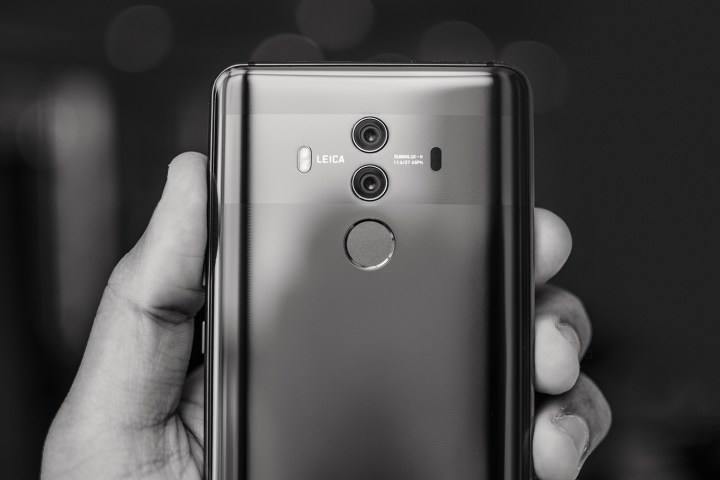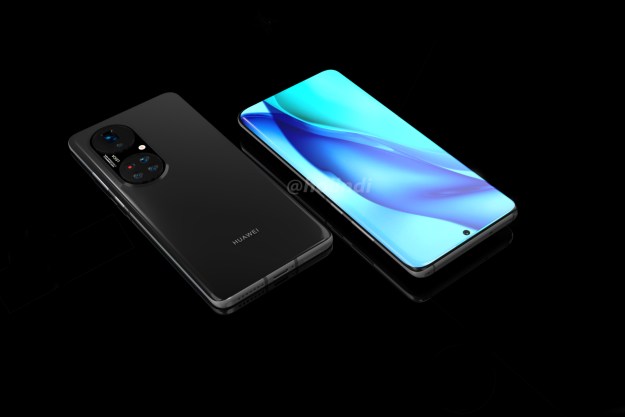
While both the Huawei Mate 20 and the Mate 20 Pro have three camera lenses, none of them shoot only in monochrome, marking the end of a fantastic era for smartphone photography. Ever since Huawei first partnered with camera experts Leica, a monochrome lens has sat alongside the regular camera lens, giving us the wonderful ability to shoot photos in pure, unadulterated black and white. On the Mate 20 series, this lens has been replaced by an ultra-wide camera lens, and while we’re excited for the creative possibilities, the monochrome lens will be missed.
For many people, me included, smartphones have been our entry into the world of photography. While we may have experimented with regular cameras in the past, any untapped photographic talent or burgeoning love will have only manifested because of the phone in our pocket. This means the phone’s camera features will have prompted experimentation, and influenced growth. Hyperbole? No, because that’s what the monochrome lens on the Huawei P9, Huawei P10, Mate 10 Pro, the Mate RS, and P20 Pro did for me, and why I wanted to write what could be called an obituary.
However, like all the best obituaries, it will really be a celebration.
Monochrome and me
My first monochrome photo taken with the Huawei P10 was snapped on February 25, 2017. Two days after, a professional photographer taught me a little about how to capture beautiful shots in black and white. That session resulted in a former member of the DT Mobile team taking what I consider to be one of the best photos of me in existence, and it’s in black and white.
Despite dabbling with the mode on the Huawei P9, this was the start of my love affair with the Huawei’s monochrome camera.
Since then, a Huawei camera phone with a monochrome lens has accompanied me on many trips, and my favorites pictures taken are often those taken in black and white. In China, it captured the super modern buildings in stark detail, while the neon in Las Vegas seemed to shine more brightly. The Grand Canyon looked like the surface of the Moon, the sharp lines of Wall Street were emphasized even more, and the Louvre in Paris took on a magical look. From a late night whisky bar in London, to a nighttime photo tour of Frankfurt, a unique atmosphere was always captured, or created, photographing in black and white.
On a photo tour of Frankfurt, photographer Bobby Anwar was a teaching a group about how to take low-light photos, and monochrome was heavily featured. A life-long Leica fan, Anwar commented at the time how the monochrome lens made Huawei’s camera phones stand out. Seeing what was possible at the time was so influential personally, and it became a running joke that if I was taking a photo, there was a good chance it was a monochrome shot.
I’m not saying monochrome worked everywhere, at all times. For every monochrome photo, a color one was usually taken at the same time, because the atmosphere changed with each one — and that was its appeal. For me, stripping away the color sometimes revealed more about the scene than keeping it in, and made me want to try it out, just to see what the end result would be like. It sparked creativity in an organic, immensely satisfying way.
I’m not the only one. Digital Trends’ photography writer Daven Mathies used the P20 Pro on a visit to Leica’s headquarters, and wrote, “We enjoyed the monochrome mode so much that we probably used it for well over half of the photos we made on the trip.”
Monochrome, and Leica
The photographers among you will already know the appeal of black and white photos, and most of us will know the many famous, striking images — especially portraits — that have been published in black and white over the years. This is not an article about the history, influence, or impact of monochrome photography. It is a celebration of Huawei and Leica bringing a true monochrome lens to a smartphone.
Leica and black and white photography are synonymous with each other, to the point it produces a digital, black-and-white-only camera. Those classic black and white portraits we’re all familiar with? Many will have been taken with a Leica camera. Through my own personal love of using it, I can easily see how it has sparked the creativity of all those master photographers.
Huawei clearly put its trust in Leica rather than push for an alternative feature that’s more headline friendly.
It also illustrated the close working relationship between Leica and Huawei. While there are technical reasons for including the lens, it’s not essential, and Huawei clearly put its trust in Leica rather than push for an alternative feature that’s more headline friendly. It was right to, as the pair created what is one of the best smartphone cameras we’ve ever used.
However, change was afoot at Huawei. The monochrome photo mode, once an easily accessed feature, was becoming less important with every new version of the software, eventually resulting in the mode being hidden in a submenu. It still worked as usual, and could even shoot in aperture mode for spectacular bokeh-style photos. But you wouldn’t stumble across it. You had to go looking.
What happened?
Leica and Huawei have a long-term partnership and as we’ve mentioned, monochrome is an important part of the company’s products. On Huawei phones it’s not just there as a feature, the monochrome lens worked in conjunction with the rest of the camera system to gather visual data and enhance its photos. Why has the monochrome lens been removed from the Mate 20 and Mate 20 Pro? Huawei told Digital Trends the feature simply wasn’t used much, and that it can now collect more image data, and crucially better data, from the other lenses. The monochrome lens had outlived its usefulness. Swapping it out for an ultra-wide lens makes sense.
It’s the end, but not entirely. Dig into the camera app on the Mate 20 and Mate 20 Pro and you’ll still find a monochrome mode, only this time it enables a filter, just like the black and white mode on every other smartphone camera out there. Huawei promises us that Leica has tuned the filter exactly to its liking, and there is very little difference between the filter and a dedicated lens. We believe this, and find it highly unlikely that Leica would put its name in a substandard monochrome filter.

But it’s not quite the same. Put a shot taken with the P20 Pro’s monochrome lens alongside a black and white filter shot taken with another phone, and although the differences are slight, they are there. It mostly has to do with crispness, depth, and pin-sharp contrast. Plus, there’s knowing you’re not taking a picture with a filter. It’s the real thing. Sweeteners make your tea taste sweet, but there’s no substitute for dropping in a real cube of actual sugar.
It’s the end of an era, and the beginning of a new one. Shooting monochrome photos with the P20 Pro, the P10, Mate RS, and the Mate 10 Pro has genuinely changed my appreciation of photography. All the pictures you see in this article are ones I’ve taken. They’re not masterpieces, but they do represent the amount of enjoyment this one feature brought.
I’m sorry to see it go, but excited for the future. Ultimately, if Leica approves of its new monochrome filter on the Mate 20, I’m sure I will too.
Editors' Recommendations
- I’ve used Android phones for 10 years, and I hate these ones the most
- Xiaomi steals Leica from Huawei for its next flagship phone
- Huawei P50 Pocket rivals Z Flip 3 in design, but not price
- Huawei’s striking P50 smartphone exists, but the company can’t launch it yet
- Huawei Mate X2’s outstanding hardware stuns, but there is a shocking downside













